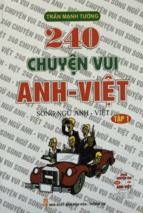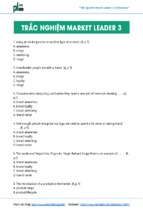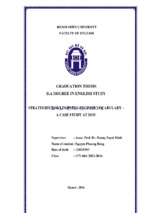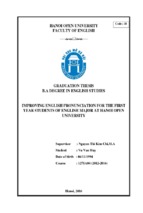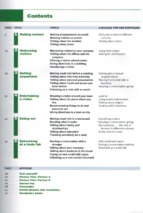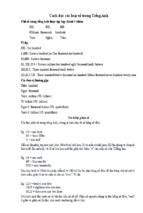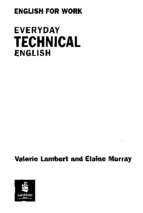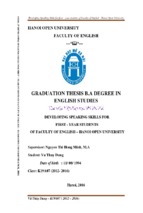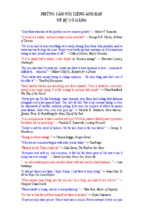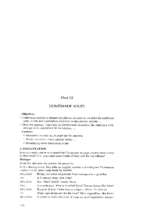Mission
Student
1. Biography of William Wordsworth
Nguyễễn Thu Hương
(leader)
13D170290
Introductio
2. Setting and background
n
information of the poem
3. Summary main content of the
poem
1. Summary main content of each
stanza of the poem
2. The figures of speech used in
poem
2.1. Simile
2.2. Personification
II. Main
content
2.3. Metaphor and Hyperbole
2.4. Repetition and Apostrophe
2.5. Musical devices: Alliteration,
Consonance, Assonance
2.6. Lexical pattern, Grammar and
Sentence
III.
Conclusion
Vũ Thanh Huyễền
13D170016
Phạm Quỳnh Hương
13D170226
Bùi Thị Là
13D170019
Hoàng Thị Thanh
Loan
13D170162
Nguyễễn Khánh Linh
13D170021
Nguyễễn Thùy Linh
13D170020
Nguyễễn Thị Kiễều Loan
13D170244
Trầền Myễ Linh
13D170230
Hoàng Trung Kiễn
Mark
Topic: The figures of speech used in “The Daffodils”
by W.WordsWorth
I. Introduction
1. Biography of William Wordsworth
2. Setting and background information of the poem
3. Summary main content of the poem
II. Main content
1. Summary the main content of each stanza of the poem
2. The figures of speech used in poem
2.1. Simile
2.2. Personification
2.3. Metaphor and Hyperbole
2.4. Repetition and Apostrophe
2.5. Musical devices: Alliteration, Consonance, Assonance
2.6. Grammar and Sentence (language that the author used throughout the poem)
III. Conclusion
I. Introduction
1. Biography of William Wordsworth
William Wordsworth (1770-1850) is probably the most famous of the romantic British poet.
William Wordsworth was born on 7 April 1770 in Cockermouth, Cumberland, in the Lake
District, United Kingdom. His father was John Wordsworth, Sir James Lowther's attorney.
The magnificent landscape deeply affected Wordsworth's imagination and gave him a love of
nature. He lost his mother when he was eight and five years later his father. The domestic
problems separated Wordsworth from his beloved and neurotic sister Dorothy, who was a
very important person in his life.
Wordsworth made his debut as a writer in 1787 when he published a sonnet in The European
Magazine. He was greatly excited by the French Revolution (1789), seeing in it the chance
for whole new order in the world.
Revolutionary passion in France made a powerful impact on Wordsworth, who returned there
in November 1791. He wanted to improve his knowledge of the French language. His
experience in France just after the French Revolution (1789) reinforced his sympathy for
common people and his belief in political freedom. Wordsworth fell passionately in love with
a French girl, Annette Vallon. She gave birth to their daughter in December 1792. However,
Wordsworth had spent his limited funds and was forced to return home. The separation left
him with a sense of guilt that deepened his poetic inspiration and resulted in an important
theme in his work of abandoned women.
When the French Revolution turned tyranny and England declared war in France, he suffered
mental anguish that brought him near to collapse. His idea was divided between England and
France, the collapse of ta revolution that had seemed so noble and liberal tormented him and
hi child and his mother were beyond his reach in France. Guilt and confusion threatened to
engulf Wordsworth, and he was helped to recovery largely through the influence of his sister
Dorothy. It’s sometimes said that all great authors are at war with themselves and that great
literature is born out of internal conflict, Wordsworth suggests the truth of the idea.
In his early years he wrote a significant amount of poetry by which he is remembered and
much of his best works was written by 1807.
In 1843 he succeeded Robert Southey (1774-1843) as England's poet laureate.
Wordsworth died on April 23, 1850.
Wordsworth on nature
Nature has a dominant role in Wordsworth’s poetry. So, he is called the poet of nature. His
poetry reveals his deeply spiritual and emotional response to nature. He portrays nature’s
beauty in his imagery. Nature has a tremendous impact on Wordsworth’s imagination. He
delights in depicting the visual beauty of various locations.
There are three points in his creed of Nature may be noted. Firstly, he conceived of Nature as
a living Personality. He believed that there is a divine spirit pervading all the objects of
Nature. This belief in a divine spirit pervading all the objects of Nature may be termed as
mystical Pantheism and is fully expressed in Tintern Abbey and in several passages in Book
II of The Prelude. Secondly, Wordsworth believed that the company of Nature gives joy to
the human heart and he looked upon Nature as exercising a healing influence on sorrowstricken hearts. Finally, Wordsworth emphasized the moral influence of Nature. He
spiritualised Nature and regarded her as a great moral teacher, as the best mother, guardian
and nurse of man, and as an elevating influence. He believed that between man and Nature
there is mutual consciousness, spiritual communion or ‘mystic intercourse’. He initiates his
readers into the secret of the soul’s communion with Nature. According to him, human beings
who grow up in the lap of Nature are perfect in every respect.
He finds out as well as establishes in his poems a cordial, passionate, impressive, emotional,
intellectual, spiritual and inseparable relationship between nature and human life. According
to him, all created things are parts of a unified whole.
Wordsworth on man
Wordsworth is perhaps not as good at describing the natural landscape as a number of other
poets. As a purely descriptive poet he is highly capable, but his real genius lies in showing
what happens when the innate power of Nature meets the power of perception of human
mind, it is as if the individual’s perception of Nature, its awe, power and capacity to teach, is
what matters, rather than nature itself, it is the interaction of Nature and human nature that
enlivens and stimulates him. Instead of placing man and nature in opposition, Wordsworth
views them as complementary elements of a whole, recognizing man as a part of nature.
Hence, Wordsworth looks at the world and sees not an alien force against which he must
struggle, but rather a comforting entity of which he is a part. Wordsworth’s poetry also
celebrates the healing influence of nature on the human spirit. Writing poetry became therapy
for Wordsworth.
William Wordsworth has chosen the theme of nature to convey the secret longing about a
beautiful and glorious world. In that place, man and nature as a harmony with the infinite joy
that a life of freedom and peace. Besides the natural poetry Wordsworth is also the world
people who love freedom to burning. Thus, the journey to look for spiritual freedom,
Wordsworth turned to the theme of Nature and Man as his special style. In the beautiful
nature pictures, people appear with love of freedom, love of nature, love of things. They also
love life, love freedom as his breathing and are portrayed as symbols of freedom desire of
simple people.
2. Setting and background information of the poem
William Wordsworth's "I Wandered Lonely as a Cloud” is a lyric poem focusing on the
poet's response to the beauty of nature. Wordsworth's 'Daffodils' is one of the most famous and
(A lyric poem presents the deep feelings and
emotions of the poet rather than telling a story or presenting a witty observation.) The
final version of the poem was first published in Collected Poems in 1815. An earlier version
was published in Poems in Two Volumes in 1807 as a three-stanza poem. The final version
has four stanzas. Wordsworth wrote the earlier version in 1804, two years after seeing the
lakeside daffodils that inspired the poem.
widely read poems in the English language.
The poem recaptures a moment on April 15, 1802, when Wordsworth and his sister,
Dorothy, were walking near a lake at Grasmere, Cumbria County, England, and came
upon a shore lined with daffodils. Grasmere is in northwestern England's Lake District,
between Morecambe Bay on the south and Solway Firth on the north. The Lake District
extends twenty-five miles east to west and thirty miles north to south. The inspiration for
this poem may have been drawn from a walk he took with his sister Dorothy around Lake
Ullswater.
“I wandered lonely as a cloud
That floats on high o’er vales and hills…
… Beside the lake, beneath the trees”
His sister Dorothy later wrote in her journal as a reference to this walk: “When we were in
the woods beyond Gowbarrow park we saw a few daffodils close to the water side, we
fancied that the lake had floated the seeds ashore & that the little colony had so sprung up.
But as we went along there were more & yet more & at last under the boughs of the trees,
we saw that there was a long belt of them along the shore, about the breadth of a country
turnpike road. I never saw daffodils so beautiful they grow among the mossy stones about
and about them, some rested their heads upon these stones as on a pillow for weariness
and the rest tossed and reeled and danced and seemed as if they verily laughed with the
wind that blew upon them over the lake, they looked so gay ever changing.”
3. Summary main content of the poem
In this poem the poet describes his experience of the sight of “a host of daffodils” during a
lonely walk, the daffodils delight him with her beauty and “their sprightly dance”. He says
“they seem as numerous as the stars that shine in the sky”. He also remarks on the beauty
of the lake nearby, but adds that even its sparkling waves are not so exuberant as the
yellow daffodils “dancing in the breeze”. His feeling are depressed, thinking of daffodils
cgeers him up.
II. Main content
Bản dịch thơ
Thủy Tiên
Là đám mầy tôi lang thang phiễu bạt
Trôi bễềnh bôềng trễn thung lũng đôềi nương
Rôềi bầất chợt một loài hoa hiển hiện
Thuỷ tiễn vàng, ôi từng đoá yễu thương
Dưới hàng cầy bễn cạnh hôề soi bóng
Gió nhẹ rung trong điệu múa nghễ thường
Vầễn triễền miễn như sao trời lầấp lánh
Và lung linh trễn dải sáng Ngần Hà
Ngàn hoa kia phơi mình đễấn ngút mắất
Quanh mặt hôề bễn bờ nước bao la
Chỉ một thoáng muôn ngàn hoa trôễi dậy
Ngẩng cao đầều theo nhịp điệu hoan ca
Sóng nhầấp nhô cùng hoa chung nhịp bước
Nhưng đầu bắềng sự rạng rỡ hần hoan
Là thi sĩ leễ nào tôi quễn được
Hoà niễềm vui để kễất nghĩa bạn vàng
Tôi miễn man ngắấm ngàn hoa vời vợi
Cảnh trí này là sản nghiệp trời ban
Có nhiễều khi trễn chiễấc giường ngơi nghỉ
Tầm hôền tôi trôấng rôễng hoặc triễền miễn
Chợt loé lễn trong thẳm sầu ký ức
Niễềm hần hoan cô quạnh lầễn ưu phiễền
Và trái tim bôễng tràn trễề hạnh phúc
Bước chần hoà theo điệu múa thuỷ tiễn
1. Summary main content of each stanza of the poem
The poem depicts a man who is wandering lonely when he sees a field of golden daffodils. At
first, he is sad and depress but when he comes into contact with nature, his mood changes
from unhappiness to happiness, cheerfulness and joyfulness. Theme of the poem is depict the
change in the mood of the author. It is the nature that turn his loneliness and solitude into
happiness and enjoyment of life. This poem brings the message: the nature has great effect on
man and can lift the man out of sorrow and misery.
Stanza 1st : The poet is wandering lonely and he suddenly encounters an immense field of
golden daffodils. The flowers are dancing and fluttering in the wind which creates a very
beautiful scene.
Stanza 2nd: , he continued describing daffodils:
The golden daffodils were compared with the stars shining and twinkling on the galaxy. The
poet depicted the beauty and happy movement of the daffodils.
Stanza 3rd:
These light-hearted daffodils, weaving in unison with each other in the wind. The author
compared them with waves. William lifted him out of his soul and placed him in a higher
state in which the soul of nature and the soul of man were united into a single harmony. The
author felt dazed with so many daffodils around him and there was no limitation between his
vision and the long belt of golden flowers and happy and pleasant when he saw golden
flowers smiling in the sunshine.
Many years later, the daffodil’s beauty still haunted Wordsworth. Whether he stayed in empty
or thoughtful mood, the images of daffodils came to mind and flashed upon his eyes:
Stanza 4th: It is revealed that this scene is only a memory of the pensive speaker.
Contemplation of nature is the main source of happiness to the poet when he is said and no
longer in direct contact with nature. The memory of daffodils was etched in the author’s mind
and soul forever. When the poet was feeling lonely, dull or depressed, he thought of daffodils
and cheered up. He desired to dance with the daffodils
2. The figures of speech used in “The Daffodils”
2.1 Simile
In the first stanza, the poet wanders lonely to have chances to contemplate the landscape.
I wandered lonely as a cloud
That floats on high o’er vales and hills,
The poet compares himself to a cloud. A cloud symbolizes his integration with natural
world. Both the poet and the cloud are parts of the world, but they can still retain their
freedom. He does’nt say: “ walked around”, but uses the much more descriptive word:
“wandered”. “Wandered” means roaming around without a purpose, like when you explore
something. So it’s not necessarily a bad thing. It means feeling purposeless and
directionless in general. Are clouds lonely? Well maybe the ones that float about vales and
hills are lonely. It’s more likely, the writer is projecting his own loneliness on the clouds. But
that still doesn’t explain the strange image, because clouds usually travel in groups. Its
thought are just so “lofty” and maybe the writer’s thoughts are, too.
The use of simile “as a cloud” is very valuable, the poet seemed to be alone, wander- just
was a cloud- flying in the sky without any destination.
If figures of speech used in the first stanza make the readers feel lonely, move to the next, it
seems more and more emotive. Wordsworth continuously praises the daffodils. In the
second stanza, writer compares the daffodils with the shining stars that twinkle in the
Milky Way. The stanza begins with the simile:
“Continuous as the stars that shine
And twinkle on the milky way
They stretched in the never-ending line”
This simile suggests the endless number of the daffodils and their shining colors. It is subtly
used: “as the stars that shine”. Daffodils were described as stars that have no end in the sky
and at the end we can only see them twinkling on the Milky Way.
By comparing daffodils to stars and using words: “never-ending”, he helps the readers
visualize the large quantity of daffodils. The daffodils are shining because they have yellow
color at their top. Therefore, when they are grouped together, the yellow color at their top
shines like stars in the sky. And he also uses “stretched” to put extra detail on how big the
daffodils field is. By that way the poet immortalized daffodils. They seemed to become
more beautiful and brilliant in Wordsworth’s poem.
2.2. Personification
Personification is one of many figures of speech used in the poem “The daffodils”. It
appears throughout the poem and contributes to make the poem become livelier and more
soulful.
In the first stanza, Wordsworth is wandering lonely and comparing himself to a cloud
when he comes across a crowd of daffodils stretching out over almost everything he can
see:
When all at once I saw a crowd,
A host, of golden daffodils;
The finger of speech used here is personification. We tend to think of daffodils as “yellow”,
but he uses the more majestic sounding: “golden”. The daffodils are personified as people
with the form of “a crowd” and “a host”. He calls them a crowd”, so they must be packed
tightly together. Then he elaborates on "crowd" by adding the noun "host". A host is just a
big group. A “crowd” is associated with groups of people while “host” is associated with
angels because people often say that “ a host of angels”. This description of the poet makes
the daffodils very special.
Beside the Lake, beneath the trees,
Fluttering and dancing in the breeze.
The poet sees the daffodils beside the lake and underneath their friends “trees”. It is clear
that daffodils no longer appear lonely as the man and the cloud. The poet sees the daffodils
“fluttering” and “dancing” happily together. These daffodils are moving so rapidly as if they
are dancing. Dancing is an action that only humans do. They are dancing in his eyes and
his imagination. "Fluttering" suggests flight, which could bring us back to the angels or
even birds or butterflies. In fact, the poet colors what he sees by his imagination. The
physical movement of dancing reflects the psychological state of the daffodils’ happiness.
The poet is successful with using personification here.
Personification used in the first stanza contrasts between the loneliness of poet and the
crowd as well as the happiness of daffodils.
In the second stanza, Wordsworth uses personification to show the liveliness and the happy
movement of the daffodils. He makes the daffodils dance as if an invitation:
Tossing their heads in sprightly dance
The flowers "toss their heads" while dancing to the wind. By "heads" we think the author
means the part of the flower with the petals, the weight of which causes the rest of the
flower to bob. The poet uses personification here to describe their movement (dancing)
and say that they were stretching along the edge of the lake. Daffodils are similar to
human, can act “Tossing their heads” and understand “sprightly dance”.
"Sprightly" means happily or merrily. Its showes us the daffodils seem to be extremely
happy and joyful when dancing in the breeze.
Moving to the third stanza, we can see the 2 first lines:
The wave beside them danced; but they
Outdid the sparkling waves in glee:
When the poet looks at the wave in the lake, he sees the dancing wave. One of the
important words we need to explain is the verb “dance”. One more time in this poem,
“dance” is used again. In this line, the poet used this verb for the action of the wave in the
lake to show that even the wave in the lake is very happy and in good emotion like the
daffodils. This is the figures of speech of personification: the wave has the action like
human.
And then, personification is continuously used in the next line with the word “glee”. In
Wordsworth’s poem, the objectives such as wave or daffodils all have their own feelings; in
particular, they are all in glee. Moreover, he even sees the glee of daffodils is stronger than
waves. The personification here is to emphasize the joy and the beauty of daffodils; besides,
this expression also helps continue the change in feelings of the poet: from loneness to
happiness.
A poet could not but be gay,
In such a jocund company:
In the line “In such a jocund company”, the writer described the happiness by the figure of
speech of personification. This is expressed by the phrase of “a jocund company”. Daffodils
now are happy and joyful as people. Especially, in this stanza the word company, brings
him together with nature, with the experience, a bonding if you will that can never be
separated. William lifted him out of his soul and placed him in a higher state in which the
soul of nature and the soul of man were united into a single harmony. Apparently, he felt
dazed with so many daffodils around him and there was no limitation between his vision
and the long belt of golden flowers.
In the fourth and also the last stanza, personification is also used sucessfully.
And then my heart with pleasure fills,
And dances with the daffodils.
The personification is used again with the word “dance”. The memory of the daffodils fills
the poet with pleasure and makes his heart “dance with the daffodils”. Once again, the
word “dance” is repeated. It is repeated in all four stanzas. When the memory of the
flowers and the lake flashes into his head, he feels happy again. It’s almost like the same
experience he had while "wandering" through nature at the beginning of the poem, when
the real daffodils pushed the loneliness out of his head. The full impact of the daffodils
beauty did not strike him at the moment of seeing them but much later when he sat alone
and remembered them. Nature had its own soul, like a friend of human. William lifted him
out of his soul and placed him in a higher place where the soul of man and nature united
into a single harmony.
2.3. Metaphor and Hyperbole
2.3.1 Metaphor
A metaphor is a comparison between two things that replaces the word or name for one
object with that of another. The figures of metaphor are also subtly used and it is not very
hard for us to find them in the poem. We can see in the sentence:
“I gazed – and gazed – but little thought
What wealth the show to me had brought:”
When the waves of the lake's water are also dancing and shining in delight with the
daffodils. As a result, the poet himself feels so happy, as if he transferred to another
spiritual world which gives him a wealth of mental relief. The word “wealth” in this
sentence he doesn't mean having money but he means that believing in God and thinking
about his greatness; give us a comfortable life.
2.3.2 Hyperbole
A hyperbole is a figure of speech where exaggeration is used for emphasis or effect. In the
poem "Daffodils" by William Wordsworth the author describes not only the daffodil’s
beauty but also their endless number. It is showed clearly in sentences:
“They stretched in never-ending line
Along the margin of a bay:
Ten thousand saw I at a glance”
Hyperbole is the use of exaggeration for effect. The flowers filled an entire field. They were
“continuous,” they “stretched in a never-ending line,” and he thought he saw “Ten
thousand” of them at a single glance. Some could say that these are terms of hyperbole
because it would be impossible to find a field of 10,000 daffodils in real life. At least
through these words, Wordsworth paints an image in the reader’s mind of what such a
place would look like. Whether or not the actual field he saw that inspired this poem held
this many flowers doesn’t matter. And who could make the time to count them, anyway?
2.4. Repetition and Apostrophe
2.4.1. Repetition
In the third stanza, poet repeated the word ‘gazed’ two times
I gazed and gazed but little thoughts
The repetition of "gaze" tells us that he kept looking at the flowers for a long time. It's as if
the speaker enjoys looking at these daffodils at the time, but doesn’t realize exactly how great
of a gift he has just received with this vision.
The word ‘dance’ is repeated 3 times in this poem.
Fluttering and dancing in the breeze.
"Dancing" is something that usually only humans do. The daffodils are given the qualities of
humans and also of some kind of otherworldly creatures, perhaps. So it denotes the happiness
and liveliness of the flowers
Tossing their heads in sprightly dance.
The flowers toss their hands while dancing to the wind. By heads I think he means the part of
the flower with the petals, the weight of which causes the rest of the flower to bob. It creates
a sense of harmonious relationship between the daffodils and the wave.
And dances with the Daffodils
His heart is set to dancing, just like the flowers. He dances along "with" them – they are his
cheerful companions once again. “Dance’ refers that this harmony is advanced to include the
poet himself.
2.4.2. Apostrophe
When all at once I saw a crowd,
A host, of golden daffodils
The poet apostrophizes daffodils and describes them in their number as a crowd of people.
In such a jocund company
The poet addresses the flowers as human beings and describes them as a happy company of
good friends.
2.5. Musical devices: Alliteration, Consonance, Assonance
Musical devices is the use of words for auditory effect, can convey meaning or mood or
unify a work.
In the “ daffodies ”, musical devices such as alliteration, consonance, assonance and
rhyming scheme is primarily used in poetry in order to add rhythm and music, by adding
an internal rhyme to a poem.
2.5.1. Rhyming scheme
The 'Daffodils' has a rhyming scheme throughout the poem. The rhyming scheme of the
poem is 'ABABCC'.
The first four lines of each stanza has a rhyming scheme of 'ABAB'. While the ending two
lines, are the rhyming couple ‘CC’.
First Stanza: AA - cloud, crowd; BB - hills, daffodils; CC - trees and breeze.
I wandered lonely as a cloud (A)
That floats on high o’er vales and hills, (B)
When all at once I saw a crowd,(A)
A host, of golden daffodils; (B)
Beside the lake, beneath the trees, (C)
Fluttering and dancing in the breeze (C)
Second stanza: AA - shine, line; BB - way, bay; CC - glance, dance.
Continuous as the stars that shine
And twinkle on the Milky Way,
They stretched in never-ending line
Along the margin of a bay:
Ten thousand saw I at a glance,
Tossing their heads in sprightly dance.
Third stanza: AA - they, gay; BB - glee, company; CC - thought, brought.
The waves beside them danced, but they
Out-did the sparkling waves in glee:
A Poet could not but be gay,
In such a jocund company:
I gazed—and gazed—but little thought
What wealth the show to me had brought:
Fourth stanza: AA - lie, eye; BB - mood, solitude; CC - fills, daffodils.
For oft, when on my couch I lie
In vacant or in pensive mood,
They flash upon that inward eye
Which is the bliss of solitude;
And then my heart with pleasure fills,
And dances with the daffodils.
Each stanza of this poem makes use of 'Enjambment' which converts the poem into a
continuous flow of expressions without a pause.
2.5.2. Alliteration
Definition: Alliteration is repetition of initial consonant sounds.
Alliteration can be used in poetry to drive the rhythm of the poem or to draw the
reader's attention to a certain phrase or line. It create mood, rhythm, and help you to
remember.
First stanza: That floats on high o’er vales and hills
The sounds /h/ is repeated.
ð
Beside the lake, beneath the trees.
The sounds /b/ is repeated.
ð
Third stanza: The waves beside them dance , but they
The sounds /ð/ is repeated.
ð
2.5.3.Consonance
Definition : Consonance is repeat the same final sound
.
Similar to any other literary device, it helps writers to develop a particular mood in the
text that corresponds with its subject matter.
I wandered lonely as a cloud ( /d/ is repeated ).
That floats on high o’er vales and hills ( /t/ )
2.5.4. Assonance
Definition :Assonance is Repetition of vowel sounds in words near one another.
A host, of golden daffodils ( 1st stanza) (/əʊ /
Beside the lake, beneath the trees,
Fluttering and dancing in the breeze ( /i:/ )
In such a jocund company. (3rd stanza) (/ə/)
2.6. Lexical pattern, Grammar and Sentence
2.6.2. Lexical pattern
‘’I wandered lonely as a cloud
That floats on high o'er vales and hills,
When all at once I saw a crowd
A host, of golden daffodils;
Beside the lake, beneath the trees,
Fluttering and dancing in the breeze.
Continuous as the stars that shine’’
In the first stanza, the poet used contrast between ‘’ lovely ‘’ and ‘’ crowd’’ & ‘’ o’er’’ and
‘’beneath’’. The author describes himself 'lonely' because his brother John was dead,
leaving him alone and sad. Then he encountered the yellow daffodils beside the lake. The
flowers were swaying here and there due to the heavy breeze, as if they were dancing
happily. The poet used contrast to stress and emphasize the meaning.
This poem contains four stanza and all are talking about poet’s imagination on nature.
Poet use maximum nature related words. The poet describes nature by describing the
daffodils and comparing them to stars and waves. The poem paints images of lakes, fields,
trees, stars in Ullswater. Wordsworth continuously praises the daffodils, comparing them
to the Milky Way galaxy (in the second stanza), their dance (in the third stanza) and in the
concluding stanza, dreams to join the daffodils in their dance. Use of colors i.e. white
(cloud), green (hills), blue (lake), silver (stars) etc. enhance the picturesque. The poem
starts in pessimism (author's loneliness) and ends in optimism (pleasure of watching
daffodils).
Thus, Wordsworth's imagination is a major factor of romanticism. The poem uses
descriptive language throughout the stanzas. The poet cannot resist himself from
participating in the dance of the daffodils. The wording is simple and melodious. He is also
writing about himself in relation to nature. Nature is a source of happiness.
In this poem, poet himself is an addresser or sender. Through the whole poem, poet
explaining his thought as monologue. There is no addressee appears in this poem. Poet
directly talking with his feeling and thought about nature (Daffodils). So, we are the
receiver here.
2.6.2. Grammar and sentence
William Wordsworth uses a complete sentence with subject and predicate. There are six
sentences Unit and Track in the entire poem. The title of the poem is a complete sentence.
'The Daffodils' is a simple word that reminds us of the arrival of spring, when the field is
full of daffodils. Daffodils are yellow flowers, having an amazing shape and beautiful
fragrance. A bunch of daffodils symbolize the joy and happiness of life. Aside from using
complete sentences, the author also makes a vivid description of the daffodils by using
several predicate to describe the scenery. Wordsworth likes to begin each stanza by using a
complete sentence and he expands it by using elaborate predicates and clauses.
III. Conclusion
In conclusion, Wordsworth used different techniques to convey the mood of the poem, and
also makes it more interesting. He also wanted express message to the reader that some
simple pleasures can heal a lonely heart, make yourself happy. Sometimes you just have to
look around, slow down, don’t be too catch up with the pace of the busy world, and simple
pleasures are right there waiting to be discover.
- Xem thêm -





